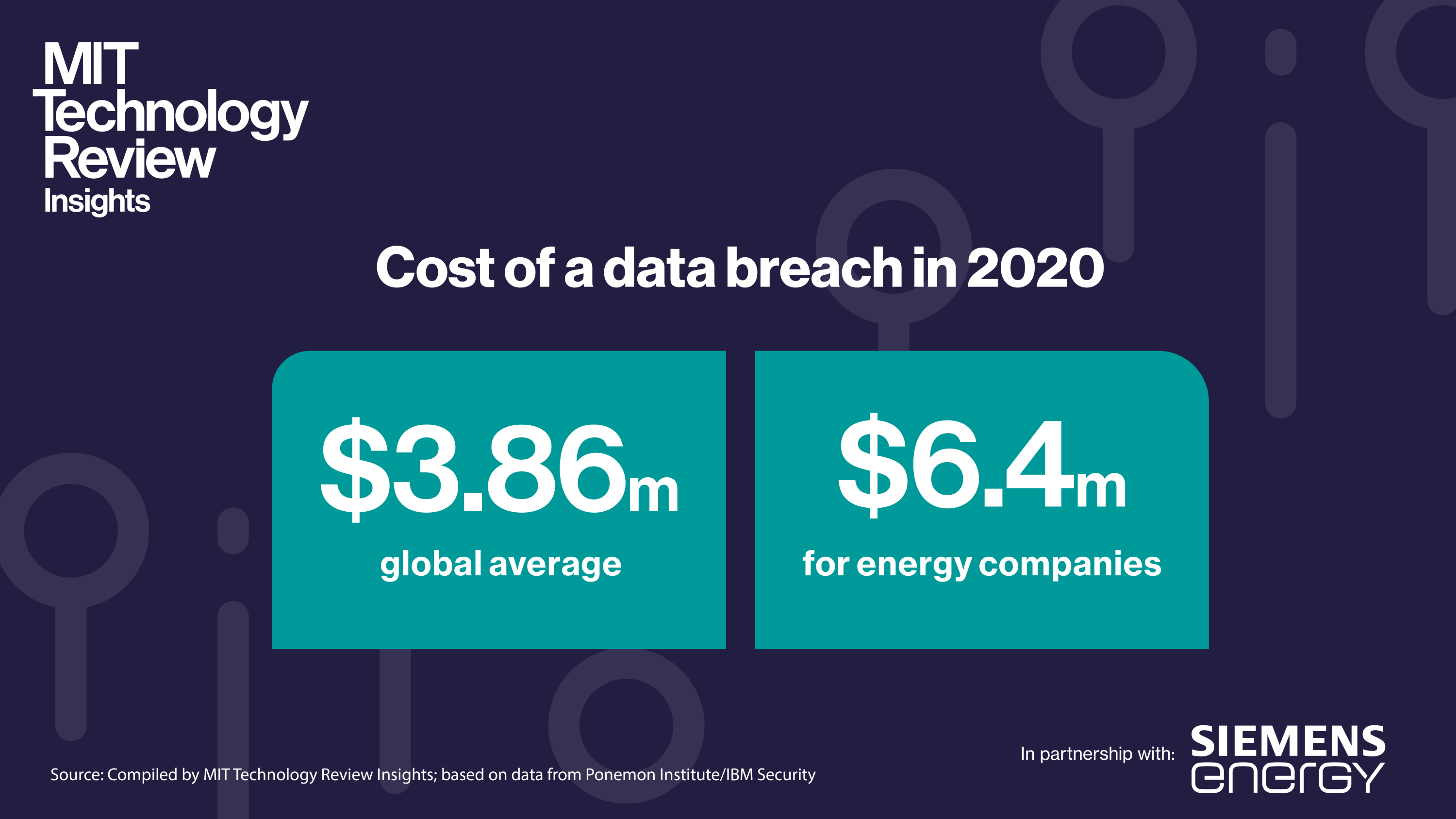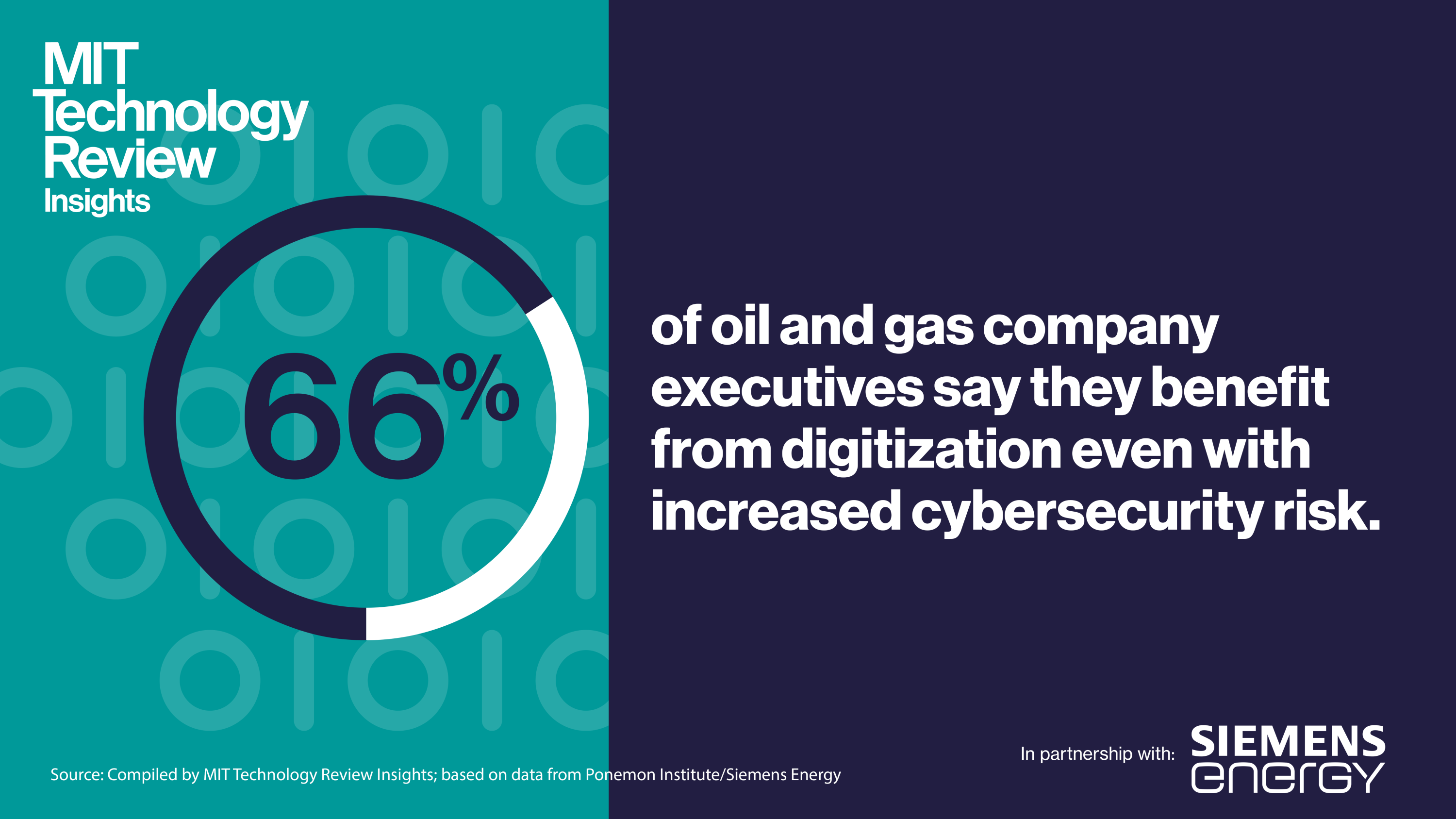Transforming the energy industry with AI
However, most companies don’t have the resources to implement sophisticated AI programs to stay secure and advance digital capabilities on their own. Irrespective of size, available budget, and in-house personnel, all energy companies must manage operations and security fundamentals to ensure they have visibility and monitoring across powerful digital tools to remain resilient and competitive. The achievement of that goal is much more likely in partnership with the right experts.
MIT Technology Review Insights, in association with Siemens Energy, spoke to more than a dozen information technology (IT) and cybersecurity executives at oil and gas companies worldwide to gain insight about how AI is affecting their digital transformation and cybersecurity strategies in oil and gas operating environments. Here are the key findings:
- Oil and gas companies are under pressure to adapt to dramatic changes in the global business environment. The coronavirus pandemic dealt a stunning blow to the global economy in 2020, contributing to an extended trend of lower prices and heightening the value of increased efficiency to compensate for market pressures. Companies are now forced to operate in a business climate that necessitates remote working, with the added pressure to manage the environmental impact of operations growing ever stronger. These combined factors are pushing oil and gas companies to pivot to new, streamlined ways of working, making digital technology adoption critical.
- As oil and gas companies digitalize, the risk of cyberattacks increases, as do opportunities for AI. Companies are adding digital technology for improved productivity, operational efficiency, and security. They’re collecting and analyzing data, connecting equipment to the internet of things, and tapping cutting-edge technologies to improve planning and increase profits, as well as to detect and mitigate threats. At the same time, the industry’s collective digital transformation is widening the surface for cybercriminals to attack. IT is under threat, as is operational technology (OT)—the computing and communications systems that manage and control equipment and industrial operations.
- Cybersecurity must be at the core of every aspect of companies’ digital transformation strategies. The implementation of new technologies affects interdependent business and operational functions and underlying IT infrastructure. That reality calls for oil and gas companies to shift to a risk management mindset. This includes designing projects and systems within a cybersecurity risk framework that enforces companywide policies and controls. Most important, they now need to access and deploy state-of-the-art cybersecurity tools powered by AI and machine learning to stay ahead of attackers.
- AI is optimizing and securing energy assets and IT networks for increased monitoring and visibility. Advancements in digital applications in industrial operating environments are helping improve efficiency and security, detecting machine-speed attacks amidst the complexity of the rapidly digitalizing operating environments.
- Oil and gas companies look to external partners to guard against growing cyberthreats. Many companies have insufficient cybersecurity resources to meet their challenges head-on. “We are in a race against the speed of the attackers,” Repsol Chief Information Officer Javier García Quintela explains in the report. “We can’t provide all the cybersecurity capabilities we need from inside.” To move quickly and address their vulnerabilities, companies can find partners that can provide expertise and support as the threat environment expands.

Cybersecurity, AI, and digitalization
Energy sector organizations are presented with a major opportunity to deploy AI and build out a data strategy that optimizes production and uncovers new business models, as well as secure operational technology. Oil and gas companies are faced with unprecedented uncertainty—depressed oil and gas prices due to the coronavirus pandemic, a multiyear glut in the market, and the drive to go green—and many are making a rapid transition to digitalization as a matter of survival. From moving to the cloud to sharing algorithms, the oil and gas industry is showing there is robust opportunity for organizations to evolve with technological changes.
In the oil and gas industry, the digital revolution has enabled companies to connect physical energy assets with hardware control systems and software programs, which improves operational efficiency, reduces costs, and cuts emissions. This trend is due to the convergence of energy assets connected to OT systems, which manage, monitor, and control energy assets and critical infrastructure, and IT networks that companies use to optimize data across their corporate environments.
With billions of OT and IT data points captured from physical assets each day, oil and gas companies are now turning to built-for-purpose AI tools to provide visibility and monitoring across their industrial operating environments—both to make technologies and operations more efficient, and for protection against cyberattacks in an expanded threat landscape. Because energy companies’ business models rely on the convergence of OT and IT data, companies see AI as an important tool to gain visibility into their digital ecosystems and understand the context of their operating environments. Enterprises that build cyber-first digital deployments similarly have to accommodate emerging technologies, such as AI and machine learning, but spend less time on strategic realignment or change management.

Importantly, for oil and gas companies, AI, which may have once been reserved for specialized applications, is now optimizing everyday operations and providing critical cybersecurity defense for OT assets. Leo Simonovich, vice president and global head of industrial cyber and digital security at Siemens Energy, argues, “Oil and gas companies are becoming digital companies, and there shouldn’t be a trade-off between security and digitalization.” Therefore, Simonovich continues, “security needs to be part of the digital strategy, and security needs to scale with digitalization.”
To navigate today’s volatile business landscape, oil and gas companies need to simultaneously identify optimization opportunities and cybersecurity gaps in their digitalization strategies. That means building AI and cybersecurity into digital deployments from the ground up, not bolting them on afterward.
Download the full report.
This content was produced by Insights, the custom content arm of MIT Technology Review. It was not written by MIT Technology Review’s editorial staff.
